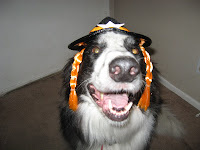
If your pet has been raised on commercial food, he or she may experience food allergies. The inferior quality of meat and poultry by-products, brewer's yeast and other pet food ingredients for increasingly common allergic reactions. Dogs can be allergic to beef, beef by-products, milk, yeast, corn, corn oil, pork, turkey, eggs, fish, fish oils, wheat and wheat by-products. Cats can be allergic to beef, beef by-products, tuna, milk, yeast, pork and turkey.
In addition, any pet may react to chemical additives, mold or contaminated drinking water. Some of the chemical that can cause an allergic reaction are sodium nitrite, benzoic acid, red dye number 40, blue dye number 2, BHA, BHT, MSG, sodium metabisulfate, ethoxyquin, artificial flavors, sugar, propylene glycol and formalin.
As an experiment, study the ingredient list of whatever food your dog or cat has been eating, then prepare a high quality diet based on other foods and supply only clean (filtered, bottled or distilled) drinking water. Raw meat does not cause the same allergic reaction that cooked meat does and organic meat can be tolerated, when meat from the supermarket can set off their symptoms.
In most cases of food sensitivity, the change is rapid, obvious and dramatic. A scratching pet stops itching, a lifeless coat begins to shine, a tired dog becomes an energetic puppy, a high strung cat becomes calm and affectionate and symptoms of poor digestion disappear.
Find a holistic veterinarian in your area for more help with an allergic pet.

















































